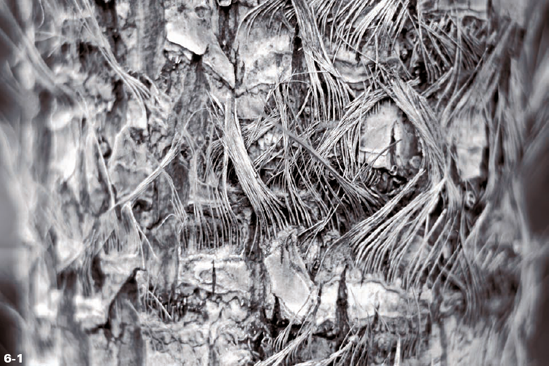Chapter 6. TEXTURES
What Are Textures?
Putting Textures into Context
Photographing Textures
Lighting Considerations
Composition
Ideas for Textures Worth Trying
The way something looks is largely dependent on the following four factors:
The shape of the item
The item's color
The physical makeup of the item
The lighting of an item
Personally, I have a desire to observe these factors separately. Photographing just the shape of something can be done by modeling the item in 3-D on a computer. You can then give it a new color and material, for example. You can study the way something is lit by changing the lighting. You can alter the colors by changing the lighting or by turning the item into a different color — or into black and white — in a software program like Adobe Photoshop.
My absolute favorite is to examine the texture of things. It is what is left after you strip out the color and shape of an object. You'd be amazed at how beautiful conceptual photos that selectively focus on only one aspect of an item can be.
Would you ever have thought that a tree could look like 6-1, for example?

Figure 6.1. ABOUT THIS PHOTO The bark of a tropical tree. Taken with a 135mm f/2.8 soft focus lens on a 24mm extension tube. 1/60 sec., f/2.8 at ISO 100.
WHAT ARE TEXTURES?
The concept of texture is difficult to define. So difficult, in fact, that quite a few languages don't even have a word for it. Luckily, this is ...
Get Macro Photography Photo Workshop now with the O’Reilly learning platform.
O’Reilly members experience books, live events, courses curated by job role, and more from O’Reilly and nearly 200 top publishers.

